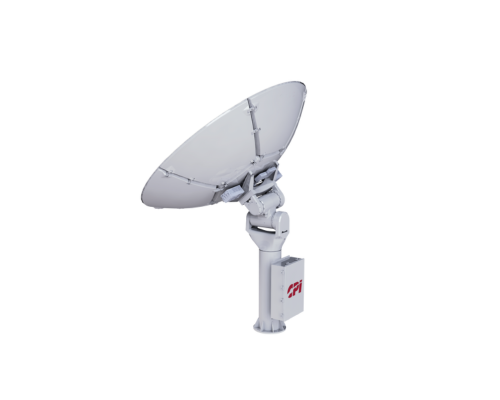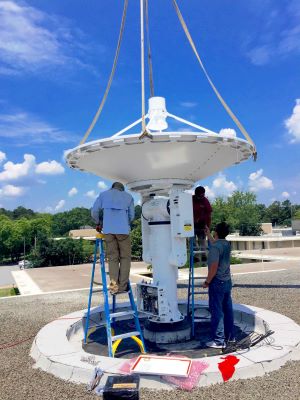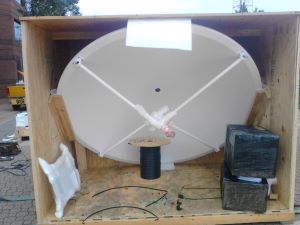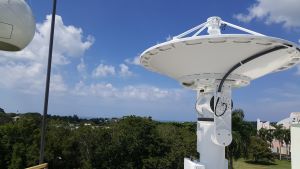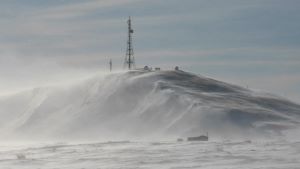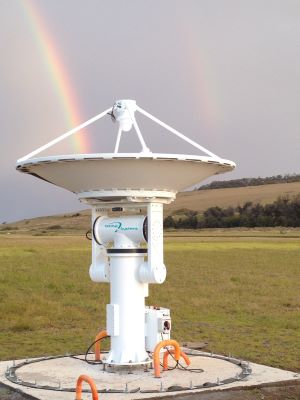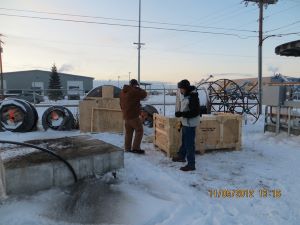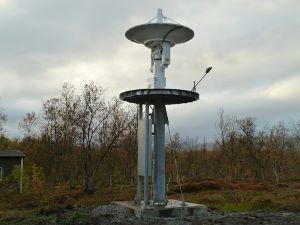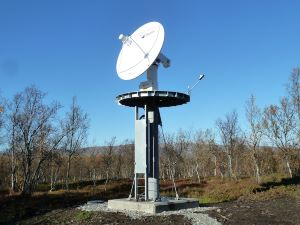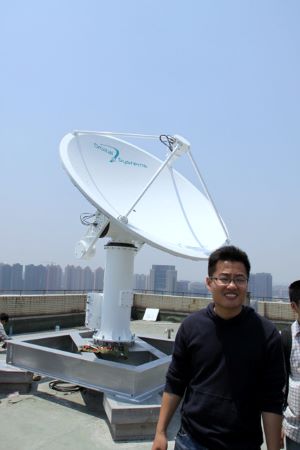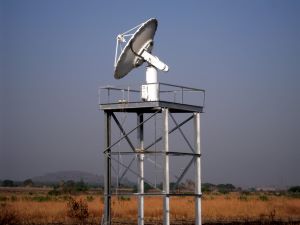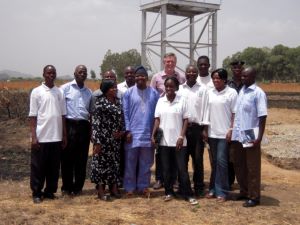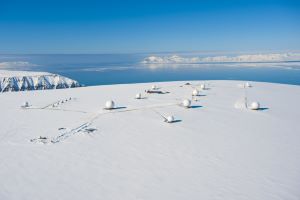Product News:
STARDUST GATEWAY TERMINALS
for modern LEO/MEO satellite constellations
Engineered for peak performance at Ka- and Q/V-band frequencies, CPI’s new Stardust gateway terminals are custom-made to meet the high-volume demands of modern LEO and MEO satellite constellations.
Their intelligent design, which combines highly integrated CPI RF electronics and a software-guided commissioning and calibration routine, support their swift setup and operation, delivering an exceptional user experience.
To learn more, click here or contact a Sales Representative at [email protected].
Introducing the Orbital Systems Installation Gallery:
Welcome to the CPI Antenna Technologies, Orbital Systems operations' installation gallery. Here you will find a small sampling of many installations of CPI Antenna Technologies, Orbital Systems' products and systems around the world; the installed base of hardware spans more than 50 countries worldwide. Many of these installations have been performed by the company's Certified Resellers and Systems Integrators. Learn more about Orbital Systems specialty antennas here.
UNIVERSITY OF ENERGY AND NATIONAL RESOURCES INSTALLED EOS-DB ANTENNA IN SUNYANI, GHANA
University of Energy and Natural Resources (UENR), The Earth Observation Research and Innovation Centre (EORIC) in Sunyani, Ghana, has installed a 2.4m X-L-band EOS-DB reception antenna system for the acquisition of satellite data and provide professional training programs used in the research of water, energy, climate and the environment.
The UENR workshops deliver valuable satellite data and applications, in-depth knowledge, practical skills, and hands-on experience for researchers, policy advisers, program planners and decision makers, both government and civil. The training and satellite data products are used to help evaluate and manage the impacts of health, disasters, ecosystems, agriculture, energy, biodiversity, climate and environment issues, particularly in Ghana and the West Africa sub-region.





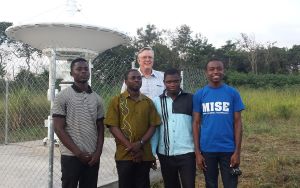



KSAT INSTALLED TT&C ANTENNA AT TROLL STATION IN ANTARCTICA
System integrator Kongsberg Satellite Services (KSAT) installed a 3.7m X-S-band TT&C ground station antenna at Troll Station in Antarctica, one of many antennas providing near-real-time data for their global ground station network. KSAT is a commercial company which provides ground station and earth observation services for polar orbiting satellites. TrollSat is located at 72° S 2° E.

GEOGRAPHIC INFORMATION NETWORK OF ALASKA INSTALLED EOS-DB ANTENNA IN FAIRBANKS, ALASKA
University of Alaska Fairbanks (UoAF), Geographic Information Network of Alaska (GINA) installed a 3.0m X-S-L-band EOS-DB antenna system at the Fairbanks Command & Data Acquisition Station (FCDAS). The antenna supports satellite missions such as SNPP, Terra, Aqua, POES, MetOp and DMSP. The antenna is used to generate and distribute a variety of satellite products in near-real time to the National Weather Service for use in making weather forecasts and warnings. The products are also archived for later access by a broad spectrum of users in Alaska and beyond. (Photo courtesy of UoAF/GINA)
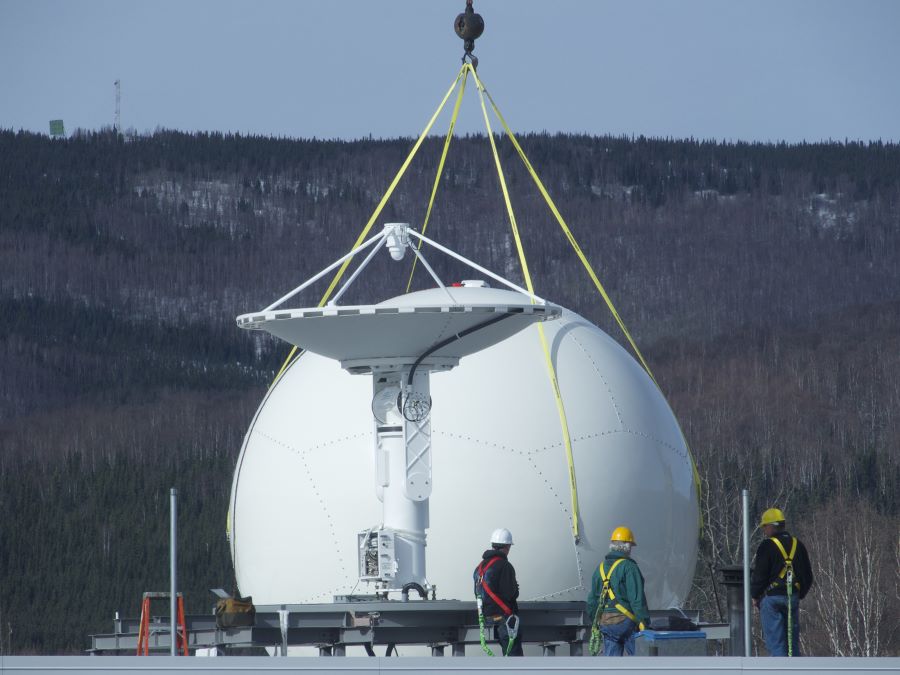
KONGSBERG SPACETEC INSTALLED EOS-DB RECEIVING STATION IN LANNION, FRANCE
Systems integrator Kongsberg Spacetec from Tromsø, Norway installed a 2.4m X-L-band EOS-DB reception system for METEO France in Lannion, France to collect data for advanced weather predictions. METEO France uses Spacetec’s advanced control and processing software, called MEOS, to manage this system.



KONGSBERG SPACETEC INSTALLED ANTENNA FOR THAI METEOROLOGICAL DEPARTMENT IN BANGKOK, THAILAND
Systems Integrator Kongsberg Spacetec from Tromsø, Norway installed an X-L-band EOS-DB reception system for the Thai Meteorological Department of Bangkok, Thailand. It will be used to collect data for advanced weather predictions and environmental monitoring.
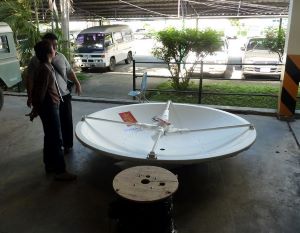


X-S-L-BAND ANTENNA INSTALLED ABOVE THE ARCTIC CIRCLE FOR TELEMETRY TRACKING
KSAT (Kongsberg Satellite Services AS) installed a 3.0m X-S-L-band antenna for high-reliability telemtry tracking at Tromsø Station, its headquarters. KSAT operates and controls all the antenna systems within their network from the Tromsø Network Operations Centre (TNOC). The X-S-L Band antenna, which is scheduled for more than 40 satellite tracking passes per day, is one of more than 60 satellite ground station antennas in KSAT’s network, providing satellite data reception, processing, distribution, analysis and archiving of near real-time data for their global client base. Tromsø is in far northern Norway inside the Arctic Circle and its weather conditions can be harsh; during installation there was freezing rain and snow each day, with no sun.




THREE EOS-DB RECEPTION SYSTEMS INSTALLED AT TOKYO UNIVERSITY OF INFORMATION SCIENCES
Certified reseller VisionTech Inc. of Japan installed three 2.4m X-L-band EOS-DB reception systems for Tokyo University of Information Science (TUIS) to collect MODIS (Moderate Resolution Imaging Spectroradiometer) scientific data for environmental research. The first system installation, pictured, was on the university campus in Chiba Prefecture, Japan. The second system was installed at Abashira in Hokkaido Prefecture, Japan, and the third system was installed on Miyako Island, in Okinawa Prefecture, Japan. The array of three systems can collect data and produce high level products rapidly from the Arctic to south of the Equator, including all ocean and coastal areas surrounding Japan.



X-L-BAND EOS-DB RECEPTION SYSTEM INSTALLED AT NASA GODDARD SPACE FLIGHT CENTER IN MARYLAND
A 2.4m X-L-band EOS-DB reception system was installed at NASA Goddard Space Flight Center in 2005; the 2.4AEHP antenna positioner is serial #1. This earth observation satellite-direct broadcast (EOS-DB) reception system is the “reference” antenna used by NASA’s Direct Readout Laboratory (DRL) to collect MODIS (Moderate Resolution Imaging Spectroradiometer) data and for the development and support of the IPOPP high-level processing software used by many research installations.
The DRL facility is also responsible for the RTSTPS and Simulcast software which is part of the Orbital Systems EOS-FES used for framing and Reed Solomon processing of MODIS data and writing level 0 files. Simulcast keeps low-level snapshots of data collected and provides a real-time view during a satellite pass. Orbital Systems used the DRL facility to test the level 0 file integration of the EOS-FES with the IPOPP high-level software processing package developed by DRL.
The system at the NASA Goddard Space Flight Center also has the Fiber Option for the 2.4AEHP, a single-mode fiber connection between the antenna and indoor equipment that carries both the RF data from the antenna and the control signals between the indoor antenna control software and the antenna positioner. Although the distance between these two points is only about 200m, a tall radio tower between these locations attracted lightning strikes that caused severe ground voltage surge, which often burned out control interfaces of earlier antennas and indoor equipment. Since the installation of the Fiber Option in 2005, there have been no further incidents.





